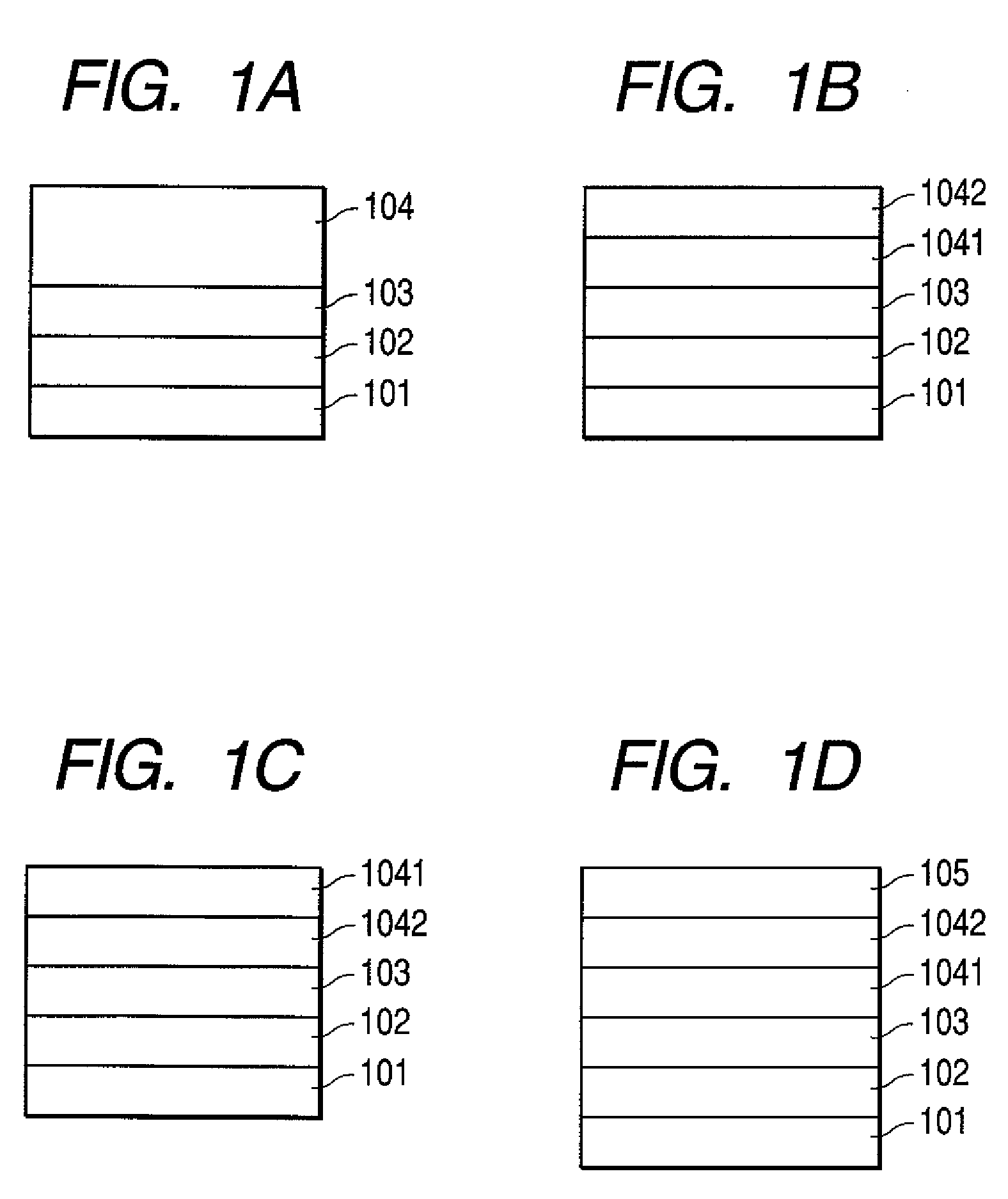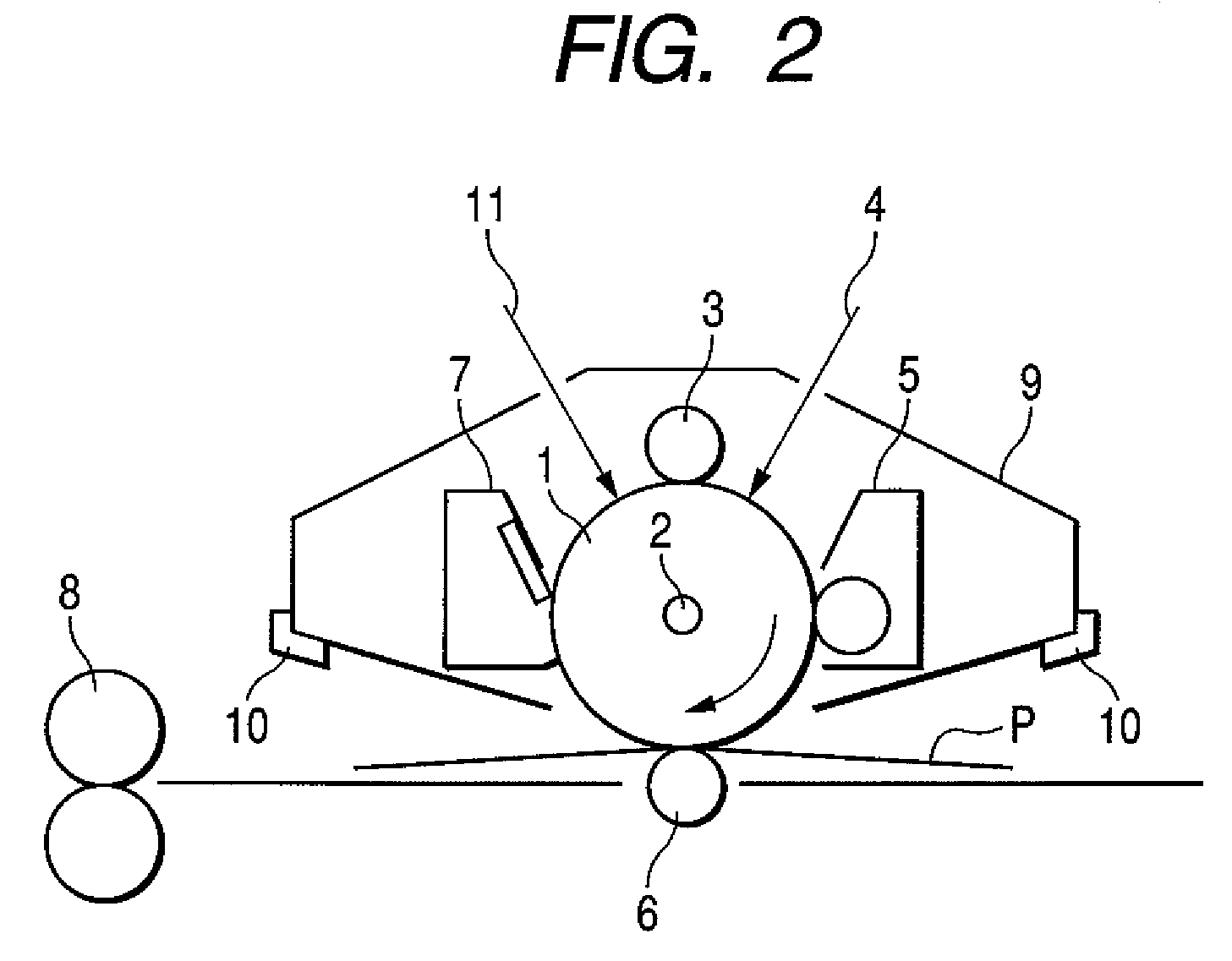Electrophotographic photosensitive member, process cartridge and electrophotographic apparatus, and process for producing electrophotographic photosensitive member
a technology of photosensitive members and electrophotographic equipment, which is applied in the direction of electrographic process equipment, instruments, corona discharge, etc., can solve the problems of not revealing any embodiment of oxygen deficient sno/sub>2, bringing about a high residual potential at the initial stage and during repeated use, and avoiding the use of a single electrod
- Summary
- Abstract
- Description
- Claims
- Application Information
AI Technical Summary
Benefits of technology
Problems solved by technology
Method used
Image
Examples
preparation examples
Conductive Layer Coating Fluid Preparation Examples
[0155]Preparation of Conductive Layer Coating Fluid A
[0156]55 parts of TiO2 particles coated with oxygen deficient SnO2 (powder resistivity: 100 Ωcm; coverage of SnO2 in mass percentage: 40%), 36.5 parts of phenol resin (trade name: PLYOPHEN J-325; available from Dainippon Ink & Chemicals, Incorporated; resin solid content: 60%) as a binder resin and 35 parts of methoxypropanol as a solvent were subjected to dispersion for 3 hours by means of a sand mill making use of glass beads of 1 mm in diameter to prepare a fluid dispersion.
[0157]To this fluid dispersion, 3.9 parts of silicone resin particles (trade name: TOSPEARL 120; available from GE Toshiba Silicones; average particle diameter: 2 μm) as a surface roughness providing material and 0.001 part of silicone oil (trade name: SH28PA; available from Dow Corning Toray Silicone Co., Ltd.) as a leveling agent were added, followed by stirring to prepare Conductive Layer Coating Fluid A....
examples
[0232]Production of Electrophotographic Photosensitive Member 1
[0233]An aluminum cylinder (JIS A 3003, aluminum alloy) of 260.5 mm in length and 30 mm in diameter which was produced by a production process having the step of extrusion and the step of drawing was used as a support.
[0234]Conductive Layer Coating Fluid A was applied by dip coating on the support in a 23° C. / 60% RH environment, followed by drying and heat curing at 140° C. for 30 minutes to form a conductive layer with a layer thickness of 15 μm. The Rz jis of the surface of the conductive layer was measured to find that it was 1.5 μm.
[0235](In the present invention, the Rz jis was measured according to JIS B 0601 (1994) by using a surface profile analyzer SURFCORDER SE3500, manufactured by Kosaka Laboratory Ltd., and setting feed speed at 0.1 mm / s, cut-off λc at 0.8 mm, and measurement length at 2.50 mm.).
[0236]A conductive layer sample (layer thickness: 15 μm) was prepared using the Conductive Layer Coating Fluid A. A...
examples 1 to 34
Comparative Examples 1 to 14
[0368]The electrophotographic photosensitive members and charging rollers produced as described above were each set in a modified machine of a laser beam printer LBP-2510, manufactured by CANON INC., and paper feed running (extensive operation) tests were conducted in an environment of 15° C. / 10% RH and an environment of 30° C. / 80% RH. Evaluation was made on images which were reproduced at the initial stage and after 5,000 sheets of paper were run. Details are as follows:
[0369]LBP-2510 was so modified as to be operated at a process speed of 190 mm / s. Evaluation was made using this modified machine, in which each electrophotographic photosensitive member and each charging roller were set in a cyan color process cartridge of LBP-2510 and this process cartridge was set in a cyan process cartridge station.
[0370]During the paper feed running, full-color printing was carried out in an intermittent mode in which a character image with a print percentage of 2% wa...
PUM
 Login to View More
Login to View More Abstract
Description
Claims
Application Information
 Login to View More
Login to View More - R&D
- Intellectual Property
- Life Sciences
- Materials
- Tech Scout
- Unparalleled Data Quality
- Higher Quality Content
- 60% Fewer Hallucinations
Browse by: Latest US Patents, China's latest patents, Technical Efficacy Thesaurus, Application Domain, Technology Topic, Popular Technical Reports.
© 2025 PatSnap. All rights reserved.Legal|Privacy policy|Modern Slavery Act Transparency Statement|Sitemap|About US| Contact US: help@patsnap.com



